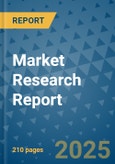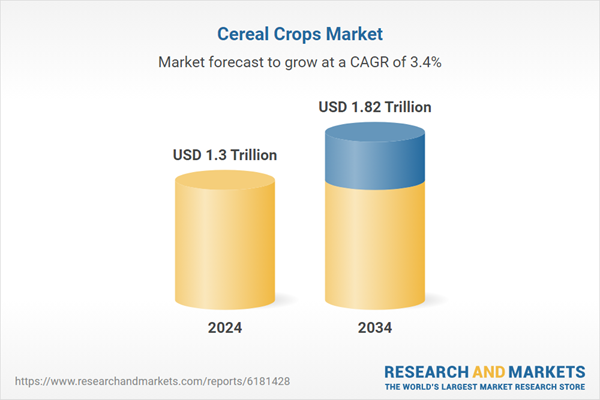Growth in this sector is largely supported by rising global population, increasing demand for protein-rich diets, and the expanding use of cereals in industrial sectors. Technological advancements are significantly enhancing both productivity and sustainability. Research shows that cereal yields can increase by up to 20%, while inputs such as water and fertilizers may be reduced by as much as 30%. Innovations in precision farming, including the use of crop and soil sensors, smart machinery for controlled traffic farming, and AI-driven data platforms, help to optimize output while reducing operational costs. Biofuel developments are also playing a growing role, with cereal crop residues being tapped for cellulosic ethanol production. Government support for renewable energy policies is further reinforcing this shift. Additionally, cereal-based inputs are increasingly being used across the food processing, nutrition, and bio-based industrial materials sectors. The clean-label trend and shift to plant-derived alternatives are also contributing to the diversification of applications for cereals across multiple verticals.
The maize, or corn segment generated USD 521.8 billion in 2024 and held a 40% share. This leadership is driven by corn’s adaptability across food, feed, and industrial applications, backed by well-developed logistics and advanced seed genetics. The broad utility of maize makes it a key global staple, while rice and wheat continue to play critical roles as primary food sources across various regions. Barley and other grains cater to niche markets with specific demand, including beverages and specialty feed.
The conventional production systems segment generated USD 913.2 billion in 2024 and is projected to grow at a 3% CAGR through 2034. These systems remain the cornerstone of the cereal industry, offering reliable yields supported by consistent input use, including synthetic fertilizers and crop protection chemicals. Despite modest growth, their large-scale infrastructure and efficiency make them integral, although some regions are gradually transitioning to alternative and more sustainable models in response to environmental concerns.
Asia-Pacific Cereal Crops Market held 47% share in 2024, driven by high domestic production and consumption. China reported a cereal output of 652.29 million tons, while India remains a top producer of rice and wheat. The region’s dominance stems from its large population base, growing food requirements, and expanding livestock sector, which boosts the demand for feed grains. While internal consumption remains the focus, export capabilities vary significantly between nations and crop types.
Top companies shaping the Global Cereal Crops Market include Bunge Limited, Nestle, Cargill Inc, COFCO Corporation, Buhler, Agrovita Foods, Archer Daniels Midland Company, Verdesian Life Sciences, Lidea, Avani Seeds Ltd, and Louis Dreyfus Company. Leading players in the Cereal Crops Market are leveraging integrated strategies to solidify their global presence. This includes investment in precision agriculture technologies to boost crop yield and reduce input waste, alongside partnerships with agri-tech firms for digital farm management solutions. Companies are expanding R&D into drought-resistant and high-yield seed varieties to ensure crop performance under climate variability. Many are diversifying product portfolios to include biofuel and industrial-grade cereal derivatives, tapping into alternative revenue streams.
Comprehensive Market Analysis and Forecast
- Industry trends, key growth drivers, challenges, future opportunities, and regulatory landscape
- Competitive landscape with Porter’s Five Forces and PESTEL analysis
- Market size, segmentation, and regional forecasts
- In-depth company profiles, business strategies, financial insights, and SWOT analysis
This product will be delivered within 2-4 business days.
Table of Contents
Companies Mentioned
The companies profiled in this Cereal Crops market report include:- Cargill Inc
- Archer Daniels Midland Company
- Bunge Limited
- COFCO Corporation
- Louis Dreyfus Company
- Verdesian Life Sciences
- Avani Seeds Ltd
- Lidea
- Buhler
- Nestle
- Agrovita Foods
Table Information
| Report Attribute | Details |
|---|---|
| No. of Pages | 210 |
| Published | October 2025 |
| Forecast Period | 2024 - 2034 |
| Estimated Market Value ( USD | $ 1.3 Trillion |
| Forecasted Market Value ( USD | $ 1.82 Trillion |
| Compound Annual Growth Rate | 3.4% |
| Regions Covered | Global |
| No. of Companies Mentioned | 12 |









